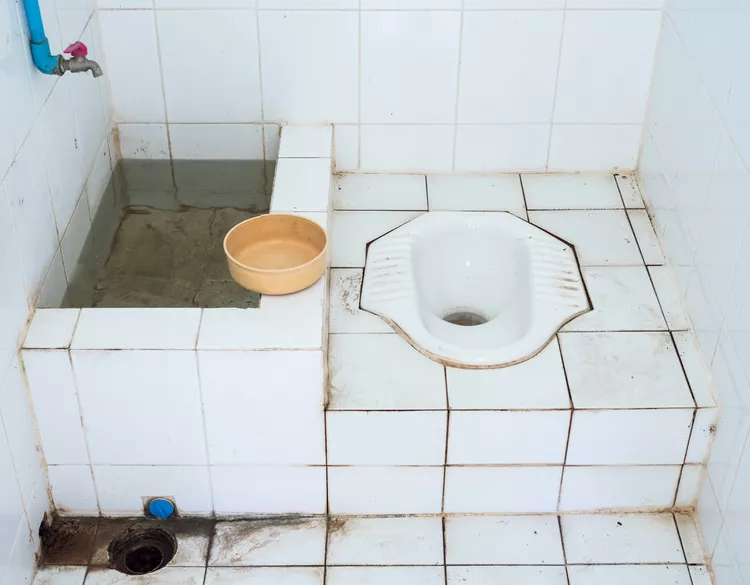Summary
Tips and Instructions for Using Asian Squat Toilets

The squat toilets in Asia may not be the most glamorous topic, yet they are an inevitable part of the travel experience in the region. Western travelers often attempt to avoid them, but facing this reality is essential.
Understanding what to expect and how to use a squat toilet properly can significantly reduce the anxiety associated with their use.
While many hotels catering to international guests provide sit-down toilets, squat toilets remain prevalent in public bathrooms located in temples, shopping areas, and restaurants.
For those travelers who frequently encounter stomach issues, a familiarity with squat toilets may occur more often than desired.
However, encountering a squat toilet on your journey doesn’t need to be a moment of panic. A substantial portion of the global population successfully utilizes them every day, and many medical professionals advocate for their use due to potential colon health benefits stemming from the body’s angle when squatting.
An Introduction to the Squat Toilet
Some newfound adventurers may mistakenly fear squat toilets more than potential dangers like illness or theft. These toilets commonly appear in travelers’ complaints about their experiences in Asia. Nevertheless, embracing the use of squat toilets as a cultural experience can alleviate worries. After all, wasn’t it exploration and learning about new cultures that motivated you to travel?
Even though Western-style toilets are becoming increasingly common in tourist areas, squat toilets still exist in local markets, eateries, temples, and some modern shopping malls.
At Angkor Wat in Cambodia, for example, amusing signs remind visitors not to stand on the seats of Western-style toilets; some attendees may have never seen a toilet with a seat!
Not all toilets in Asia pose a challenge; for instance, Japan features state-of-the-art toilets equipped with heated seats and an array of controls. Similarly, public bathrooms in Singapore often maintain impressive standards, with fines for neglecting to flush!
Surprisingly, squat toilets are not limited to Asia; they can also be found in various countries across the Middle East, Europe, and South America.
Types of Squat Toilets in Asia
Squat toilets exhibit a range of designs throughout Asia. Some resemble simple holes in the ground, while others may have porcelain basins positioned at foot level.
Cumbersome hybrids exist as well, offering the challenge of Western-style toilets without seats. These configurations can be particularly difficult to navigate.
In Southeast Asia, some bathrooms feature buckets or small tubs for flushing purposes. In Indonesia, this basin is referred to as a mandi, used for flushing and hygiene.
Health Benefits of Squat Toilets
Research indicates that the lack of a seat may actually confer health benefits. Besides being more sanitary since no surface contact is necessary, utilizing squat toilets can help prevent conditions like hemorrhoids, hernias, and lower intestinal issues.
Human anatomy favors the squatting position for optimal elimination, reducing the possibility of “fecal stagnation,” a potential contributor to colon cancer and inflammatory bowel diseases.
Rules for Using a Squat Toilet
- Rule #1: Never dispose of paper or other waste in Asian squat toilets. Ancient sewer systems cannot handle it, resulting in costly clogs and repairs. Place used toilet paper in designated plastic bins unless you confirm modern systems are in place.
- Rule #2: Always carry your own toilet paper. Public facilities rarely provide paper. Alternatively, follow local practices by using water for cleanliness, as toilet paper is often available at restaurant tables.
- Rule #3: Remember to flush. Many squat toilets lack automatic plumbing. Instead, use a bucket of water and dipper to flush. Refilling the bucket afterward is courteous and fosters good karma.
Tips for Using Squat Toilets
- Although it may seem drastic, some public squat toilets charge a fee. Always keep some coins handy for emergencies.
- Be mindful of foot hygiene; some establishments request patrons leave shoes outside, while many squat toilet areas are frequently damp. In Japan, special toilet slippers might be available for use.
- Hand sanitizer is a useful item to carry, as soap and towels for drying hands are often scarce.
- Stay cautious in wet areas surrounding squat toilets to prevent slipping, especially if supporting against the back wall. Avoid bringing bags that need to be placed on the ground.
- When using the hose adjacent to the toilet, be aware that water pressure can vary greatly. A slippery floor may indicate a functional “bum gun.”
Why No Toilet Paper?
In various cultures, water serves as the primary means for cleaning after using the toilet. In some cases, the left hand is utilized, followed by washing with water.
In regions where this practice is common, the left hand is often considered “unclean.” Therefore, using the right hand for greetings and meals is advisable. Additionally, due to historical sewer system limitations, providing toilet paper is avoided to prevent clogs.
The Best Way to Use a Squat Toilet
Ultimately, everyone has their unique technique for utilizing squat toilets; the details of which vary for each individual. Keep in mind that floors are typically wet; therefore, avoid taking backpacks or other items that need to be placed on the ground.





